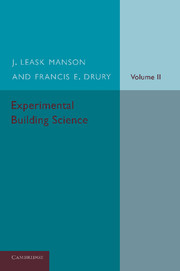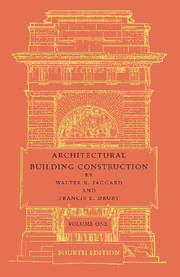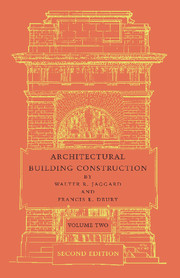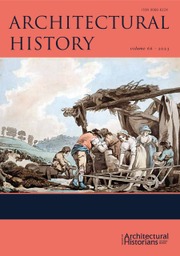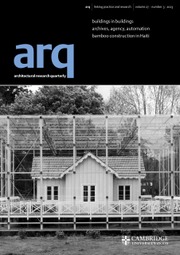Experimental Building Science
Volume 2. Being an Introduction to Mechanics and its Application in the Design and Erection of Buildings
£27.99
- Authors:
- J. Leask Manson
- Francis E. Drury
- Date Published: December 2013
- availability: Available
- format: Paperback
- isbn: 9781107669475
£
27.99
Paperback
Looking for an inspection copy?
This title is not currently available on inspection
-
First published in 1929, this book forms the second of two volumes on the subject of experimental building science. The text presents an introduction to mechanics and its application in the design and erection of buildings. This forms a development of the introduction to scientific methods as applied in building science presented in volume one. Numerous illustrative figures and appendices are also included. This book will be of value to anyone with an interest in the process of building and architecture.
Customer reviews
Not yet reviewed
Be the first to review
Review was not posted due to profanity
×Product details
- Date Published: December 2013
- format: Paperback
- isbn: 9781107669475
- length: 484 pages
- dimensions: 229 x 152 x 27 mm
- weight: 0.71kg
- availability: Available
Table of Contents
Part I. The Conditions of Statical Equilibrium, with Applications to Building Structures:
1. Introduction. The conditions of equilibrium for systems of concurrent coplanar forces
2. Systems of non-concurrent forces. Conditions of equilibrium for all systems of coplanar forces
3. Problems in parallel forces. Centres of gravity and centroids
4. The graphical treatment of systems of non-concurrent forces. The link polygon and polar diagram. Reactions of trusses
5. The forces acting in framed structures
6. The equilibrium of systems of parallel forces which are not coplanar. The stability of cranes and scaffolding
7. The equilibrium of systems of concurrent non-coplanar forces. The forces acting in masts and in derrick towers
Part II. Loaded Beams and the Theory of Elastic Bending:
8. The equilibrium of forces in a loaded beam
9. Shearing forces and bending moments in beams
10. Relations between load, shear force and bending moment in a beam
11. Shear forces and bending moments in framed structures
12. Stress and elastic strain. Strength and elasticity of structural materials
13. The theory of elastic bending
14. The comparison and design of solid beam sections
15. Shear stress and strain. The distribution of shear stress in beams
16. The deflection of beams
17. Fixed and continuous beams
Part III. An Introduction to Some Important Structural Problems:
18. Riveted connections. Built-up beams
19. Concrete. The flitch beam. The reinforced concrete beam
20. Tee-beams. Doubly reinforced beams. Shear reinforcement
21. Masonry or block construction - walls
22. Masonry or block construction - arches
23. Strength in compression. Compression members and columns in steel and cast iron
24. Eccentric loads on columns. Reinforced concrete columns. Column foundations
25. The strength of timber. Timber construction
Appendix I. Properties of the British standard sections
Appendix II. List of symbols
Answers to problems
Index.
Sorry, this resource is locked
Please register or sign in to request access. If you are having problems accessing these resources please email [email protected]
Register Sign in» Proceed
You are now leaving the Cambridge University Press website. Your eBook purchase and download will be completed by our partner www.ebooks.com. Please see the permission section of the www.ebooks.com catalogue page for details of the print & copy limits on our eBooks.
Continue ×Are you sure you want to delete your account?
This cannot be undone.
Thank you for your feedback which will help us improve our service.
If you requested a response, we will make sure to get back to you shortly.
×
